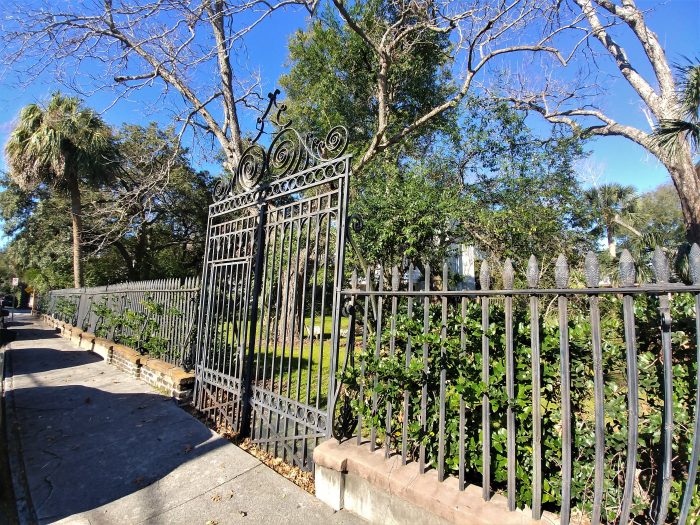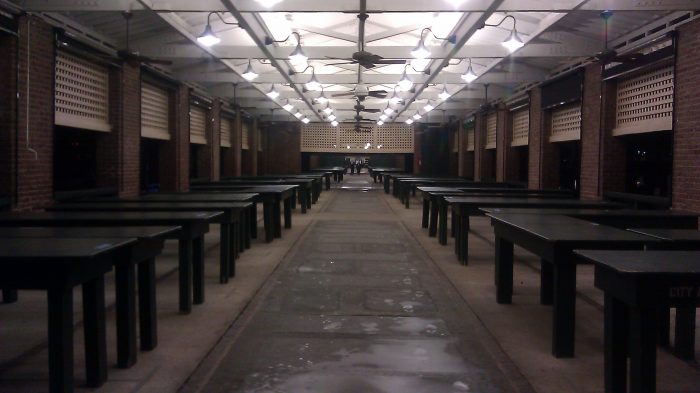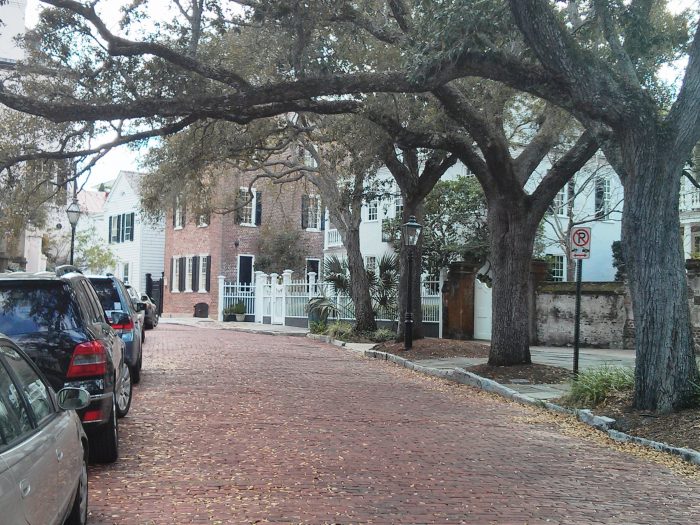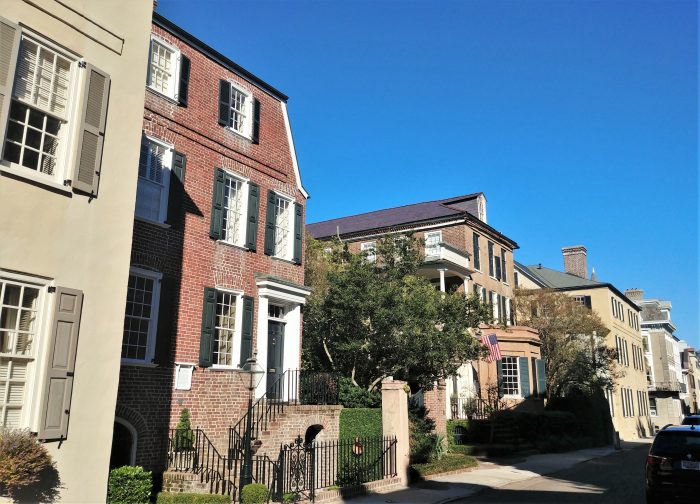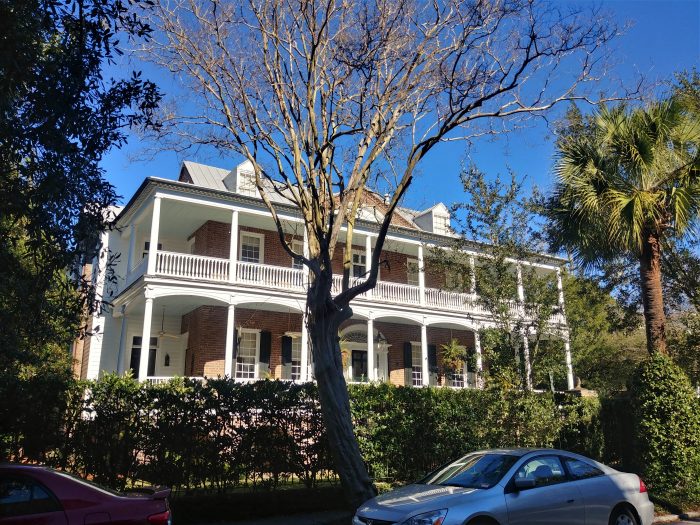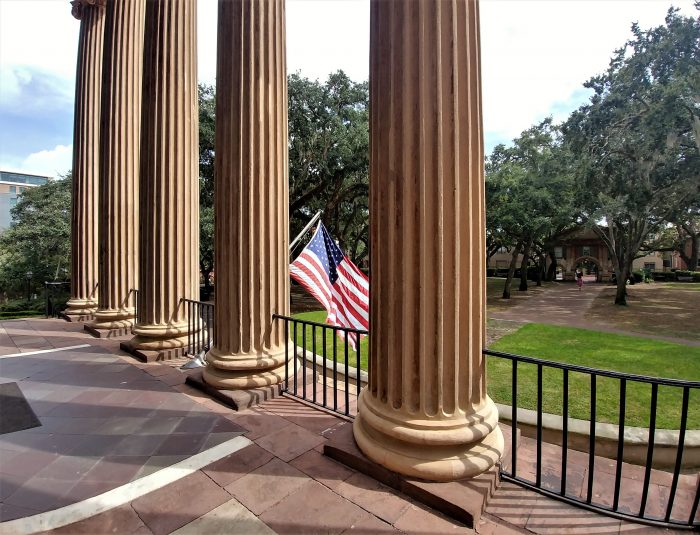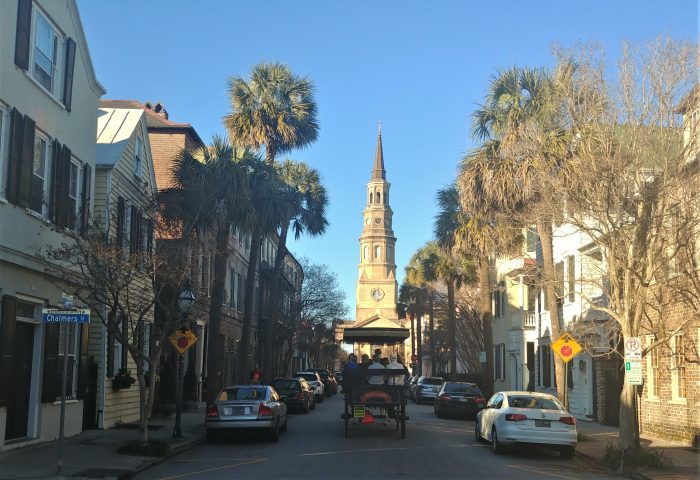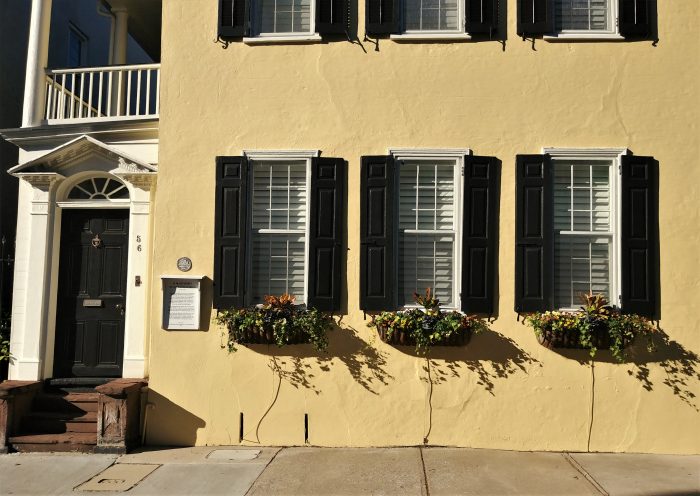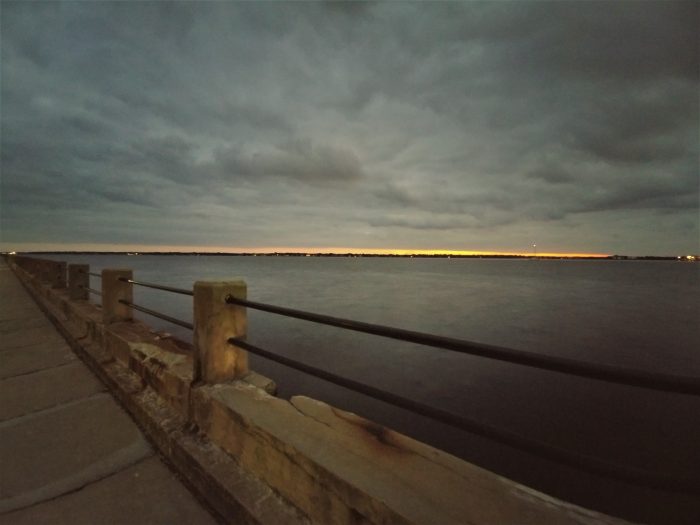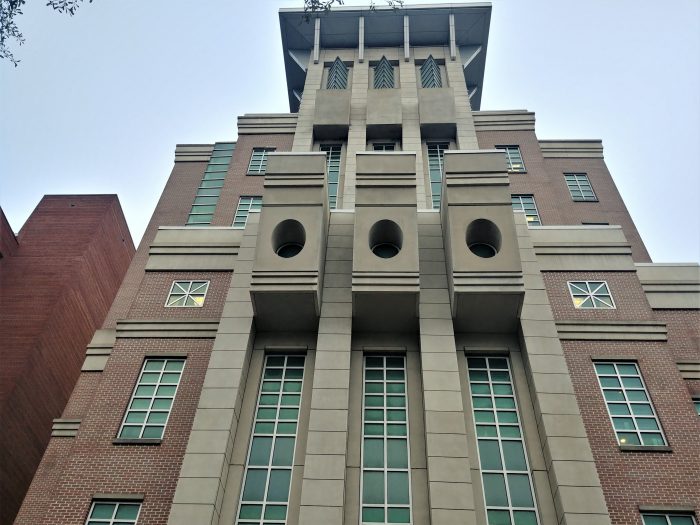This fence and gate on Vanderhorst Street help frame a house located on Thomas Street — that was built and sold in 1833 to Robert Barnwell Rhett, who was best known as the “Father of Secession.”
Market Shed
Night time at the City Market. During the day, the buildings are full of action — vendors, visitors and shoppers. The entire complex of buildings is on the National Register of Historic Places. At the head is the beautiful Market Hall, followed by a series of “sheds” — one of which is shown here.
The Bend
The section of Church Street is called the “Bend” for obvious reasons. This bricked stretch of the street is one of the most beautiful to stroll in town.
Gambrels
A beautiful stretch of pre-Revolutionary houses on Tradd Street. While the gambrel roof form on the brick tenement on the left was once common in Charleston in the mid 18th century, only a few examples of it still survive.
Not A Plantation
This beautiful plantation style house on Vanderhorst Street was built in the mid-1820’s by John Bickley, a lumber merchant and rice planter.
Educational Columns
These columns are part of the front of Randolph Hall on the campus of the College of Charleston. One of the oldest college buildings still in use in the United States, Randolph Hall (c. 1828-29) is now the home for much of the administrative functions of the college.
Classic Charleston
A classic Charleston scene. St. Philip’s is certainly one of the iconic churches in the Holy City. While this church building was erected in 1836 (it being the third one for the congregation), the steeple was added between 1848 and 1850.
Bermuda Stone
This handsome pre-Colonial house (c. 1740) on Tradd Street was built out of brick and Bermuda stone, which you can find in many of the houses and other buildings in Charleston of that era.
Murray
The evening sky, as seen from the Low Battery. The street that runs along here, Murray Boulevard, is named in honor Andrew B. Murray — who, in the early 1900’s, was one of the driving forces for the reclamation of the 47 acres of marsh and river that the street now sits on.
Hollings Cancer Center
The Hollings Cancer Center at MUSC has helped countless people and families. While not a traditional looking Charleston building, it sure plays an important role in the city.
- « Previous Page
- 1
- …
- 75
- 76
- 77
- 78
- 79
- …
- 188
- Next Page »
